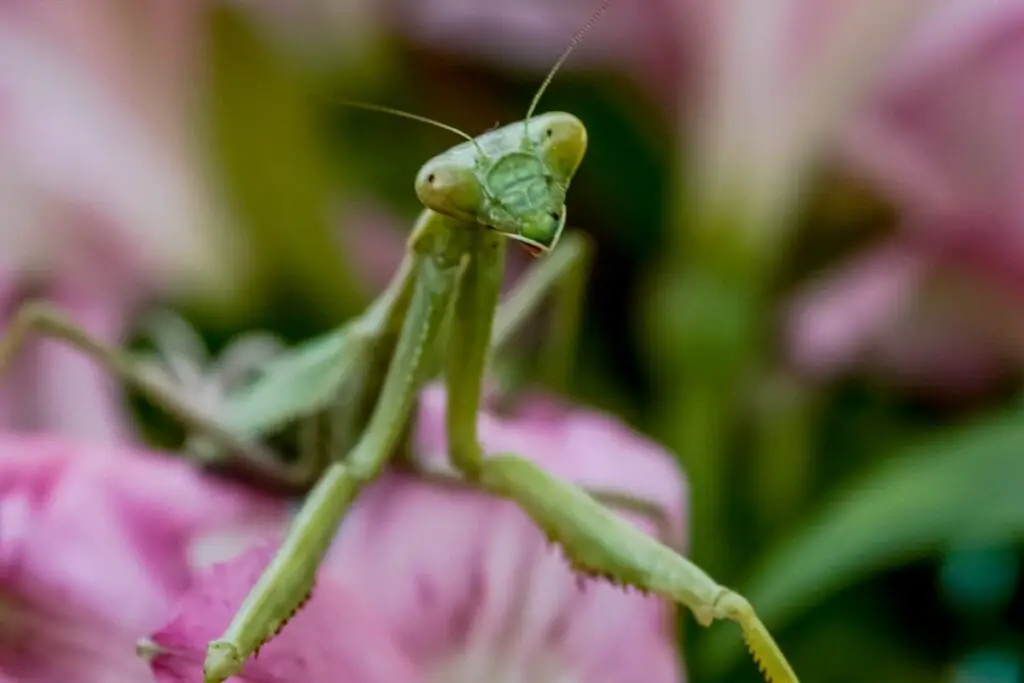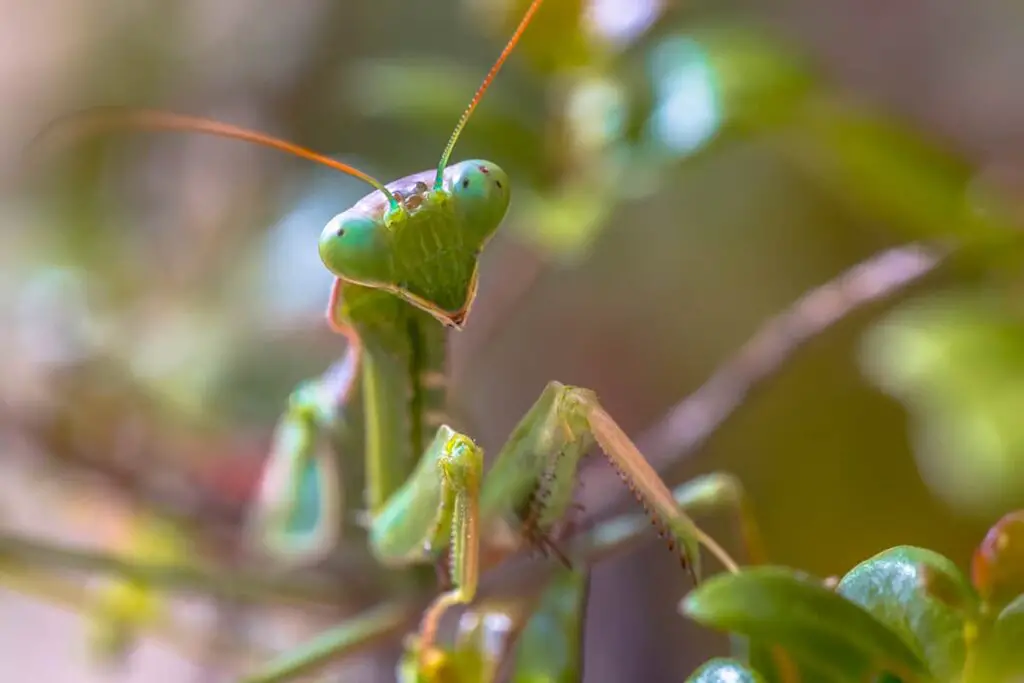Breeding praying mantises can be a fascinating journey into the lifecycle of one of the insect world’s most distinguished predators. If you’re considering embarking on this venture, it’s essential to understand that success hinges on careful planning and an understanding of the mantises’ unique maturation and mating behaviors. By ensuring you have a healthy male and female pair that reaches maturity at approximately the same time, you are setting the stage for a successful breeding experience.
One of the critical stages in breeding is identifying the sex of your praying mantises, as male-female dynamics are pivotal to mating rituals and egg fertilization. Unlike stick insects, which exhibit parthenogenesis (the ability to reproduce without mating), praying mantises typically require fertilization to develop viable eggs. Your preparation for the breeding process should also include a nutritional diet, which is particularly crucial for the female to ensure she has the energy reserves needed for egg production.
When it comes to setting up the environment and understanding the behaviors of these insects, patience and observation are your greatest allies. From feeding the hatched nymphs to accommodating the specific diet and habitat needs of your mantises, every step is an opportunity to learn more about these extraordinary creatures. With attention to detail and a nurturing approach, you too can witness the remarkable process of praying mantis reproduction and contribute to the thriving of these incredible insects.
Understanding Mantis Species
In the intriguing world of mantises, correct species identification and knowledge of their environmental preferences are crucial for successful breeding.
Species Identification
To accurately identify mantis species, examine physical characteristics such as body size, color, and the structure of appendages. For example, the Orchid Mantis is known for its striking pink and white coloration resembling flowers, which helps in camouflage. Males and females also differ, with males generally being smaller and having longer antennae compared to females.
Environmental Preferences
Each mantis species thrives in specific environmental conditions. Temperature and humidity must be tailored to mimic their natural habitat for optimal health. For instance, species like those discussed in Keeping Insects often require a warm climate with regulated humidity levels. Provide foliage and adequate space mimicking their natural settings, like vertical structures for species that tend to climb.
Creating a Conducive Habitat
Creating the right living environment is crucial for the health and breeding success of your praying mantis. Every detail, from the size of the enclosure to the level of humidity, needs careful consideration.
Enclosure Setup
Your mantis will need a space to move and hunt. An enclosure that is three times the length of the mantis and twice the width provides adequate space. For example, if your mantis is 3 inches long, you’ll want a container that’s at least 9 inches tall and 6 inches wide. Mesh or ventilated enclosures are ideal to ensure ample airflow without letting your mantis escape.
Temperature and Humidity Control
Mantises thrive in warm and humid conditions. Aim for a temperature range of 24-30°C (75-86°F) during the day, dropping to 18-22°C (64-72°F) at night. Humidity should be maintained between 40% to 70%. A light mist of water daily helps to maintain these humidity levels, using a spray bottle on a fine mist setting.
Plant and Substrate Selection
Choose live plants that mimic the mantis’s natural environment, which add to the humidity and provide hiding spots. Good substrate choices like soil, coco coir, or moss should be included in the bottom of the habitat to maintain humidity and reflect a natural setting. Your mantis will appreciate this touch of habitat realism.
Breeding Mantis
Breeding praying mantises can be a fascinating process. It requires attention to the sex of your insects, understanding their unique mating behaviors, and providing the right kind of care after mating has occurred.
Sexing Your Mantises
To start breeding, you’ll need to determine the sex of your mantises. Male mantises tend to be smaller and have longer wings than females. Additionally, males usually have more segments on their abdomens. Look for these physical differences to help you ensure you have a pair ready for breeding.
Mating Rituals and Techniques
Once you’ve identified a male and female, it’s time to introduce them for mating. Mating rituals can vary between species but often involve the male displaying courtship behavior to avoid being eaten by the female. It’s crucial to introduce them carefully, as the female may become aggressive. For a successful mating, place a well-fed female in the enclosure first, followed by the male, and then observe their interactions closely, always being prepared to intervene if necessary.
Post-Mating Care
After mating, the female will need a secure and nourishing environment to lay her eggs. Provide her with adequate water and enough space. Once she lays her egg cases, known as oothecae, you’ll have to maintain proper temperature and humidity levels for them to develop successfully. The development of nymphs requires careful monitoring to ensure they have enough food and space as they grow.
Egg Laying and Incubation
When breeding praying mantises, understanding the ootheca formation, providing optimal incubation conditions, and knowing how to monitor and troubleshoot are crucial for the successful development of the eggs.
Ootheca Formation
After mating, female praying mantises lay their fertilized eggs in a structure known as an ootheca. This is a foam-like substance that hardens to form a protective casing around the eggs. The details of the ootheca’s construction are important as it safeguards the embryos from environmental threats and predators. For more information on what constitutes an ootheca, visit USMANTIS.
Incubation Conditions
The incubation conditions of praying mantis eggs are vital for successful hatching. Maintaining the correct temperature and humidity levels is essential. Generally, these conditions vary slightly depending on the mantis species you are breeding. Incubation temperatures usually range between 75 to 85 degrees Fahrenheit, with a humidity level of around 40 to 70 percent. To understand the variations in breeding mantids, consider reading the guide by Keeping Bugs.
Monitoring and Troubleshooting
During incubation, monitoring is key. Regularly check on the ootheca to ensure that the temperature and humidity remain stable. Look out for signs of mold or excessive dryness, both of which can harm the developing mantis nymphs. If you spot issues, troubleshoot by adjusting the environmental conditions or consulting more detailed care instructions from Keeping Insects.
Frequently Asked Questions
In this section, you’ll find the answers to some common queries about breeding praying mantises. From identifying the right season to ensuring the successful hatching of eggs, we’ve got you covered.
How can I identify the breeding season of praying mantises?
The breeding season for praying mantises typically begins in autumn. You can recognize it has started when the adult mantises reach full maturity and the females display receptivity to males.
What is the mating process like for praying mantises?
The male cautiously approaches the female from behind, mounts her, and copulates to fertilize the eggs. During mating, it’s vital to introduce the male in the evening to increase the chance of a successful encounter.
How do I care for praying mantis eggs and ensure they hatch successfully?
To ensure praying mantis eggs hatch successfully, maintain proper humidity and temperature in their environment. The ootheca, or egg mass, requires several weeks to hatch, and its chances improve with a properly humidified environment.
What are the best conditions for keeping multiple praying mantises together?
Multiple praying mantises should be housed separately to prevent cannibalism unless they are being bred. Provide ample space, sufficient food, and individual enclosures to keep them healthy and stress-free.
Can you explain the sexual reproduction process of praying mantises?
Sexual reproduction in praying mantises involves a risk for the males, as they may be cannibalized by females after or during mating. Despite this, a successful mating results in the female laying fertilized eggs, which can develop into nymphs.
What are the signs that a praying mantis is ready to lay eggs?
A female praying mantis ready to lay eggs will often be swollen and less active. She’ll search for a suitable location to deposit her ootheca, showing behaviors such as scanning the environment and testing surfaces for an adequate egg-laying spot.
Driven by a passion for those tiny creatures that rule our world, we at Bug Domain strive to be your go-to resource for information on insects.




